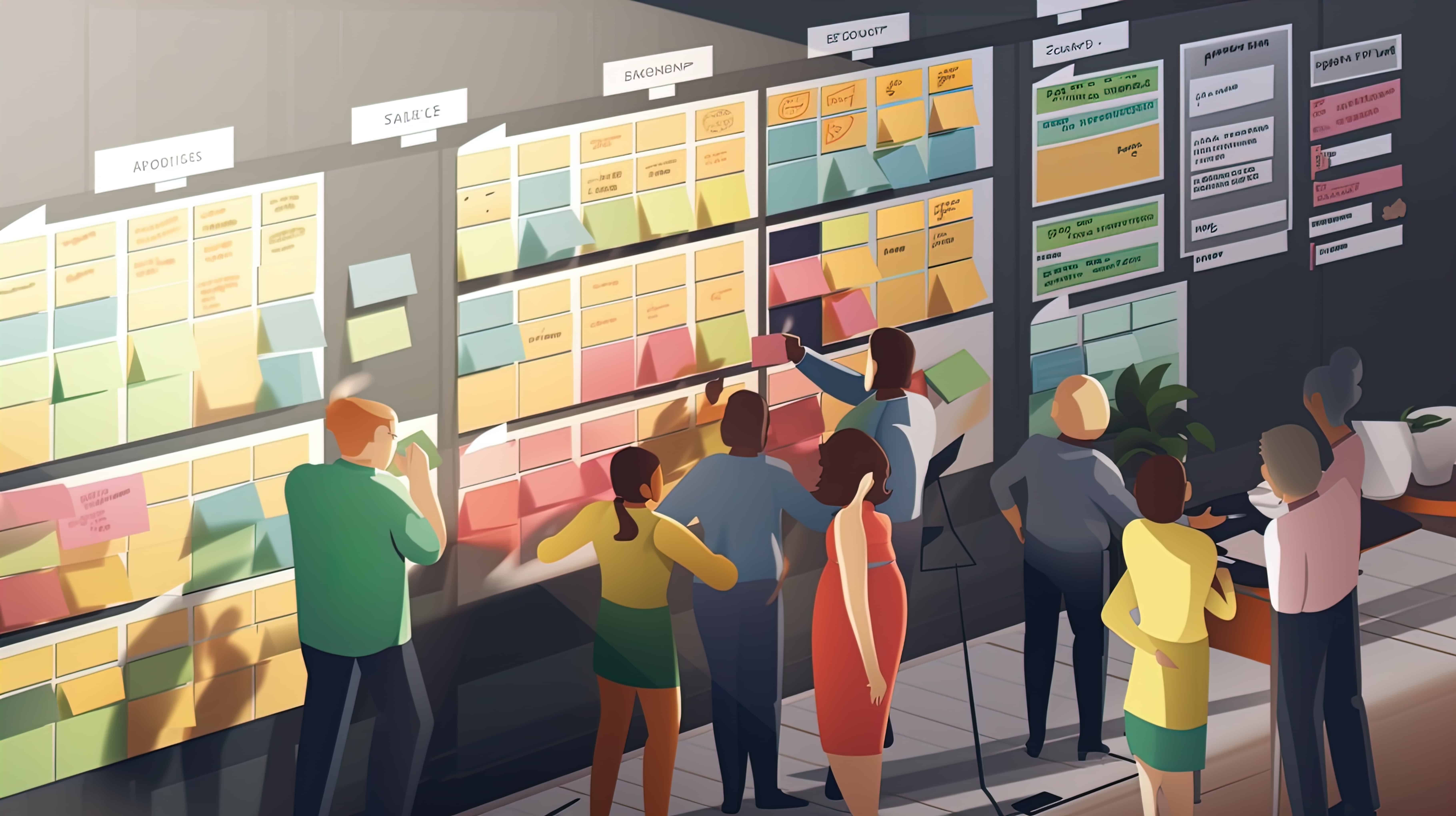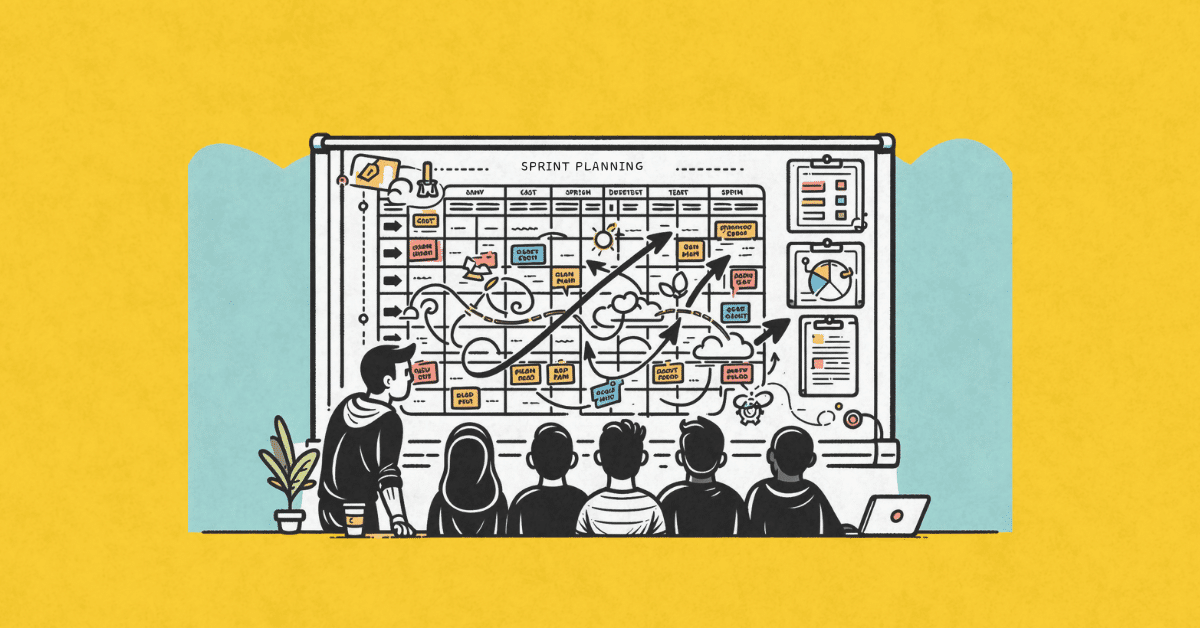The adoption of Agile has become commonplace with more and more organizations recognizing the benefits this approach to project management can bring. A key factor in ensuring success is investing in Agile training and education for your team members.
Agile training and education provides your teams with the knowledge and skills to work effectively with an Agile mindset, resulting in better collaboration, communication, and high-quality product delivery. Training is essential for successful Agile transformation.
Lack of understanding of Agile methodologies, poor team collaboration, and difficulty adapting to new ways of working often plague teams and organizations navigating an Agile transformation. The right training and education program can help your team overcome these challenges and succeed in their Agile journey. Let’s explore some best practices and guidance to maximize your team’s success.

Why is Agile Training So Important?
Don’t skimp on Agile training. The internet is full of Agile experts and snake oil dealers offering bad advice that can slow down (or even kill) your Agile transformation. Effective Agile training from seasoned guides with a proven track record of success will increase the impact of your transformation efforts.
Agile training is important because it equips teams with the knowledge, skills, and understanding they need to work effectively in an Agile environment. Agile training provides a solid foundation in Agile principles and practices, helping team members collaborate, communicate, and deliver high-quality products and services.
Improved Understanding of Agile Principles and Practices
A maxim in Scrum says: “Scrum is easy to learn, and difficult to master.” This has absolutely been my experience. Team members who receive training and education in Agile principles and practices are better equipped to understand how to work effectively in an Agile environment. They learn to move beyond the processes and tools to gain an Agile mindset. This improved understanding enables teams to deliver high-quality products and services and provides a foundation for continuous improvement.
Better Team Collaboration and Communication
The first Agile value emphasizes the importance of “individuals and interactions.” A successful Agile transformation requires effective communication with the team and stakeholders. Training and education helps team members understand the importance of communication and provides them with the tools and techniques they need to work together effectively.
Higher Levels of Employee Engagement and Job Satisfaction
Training increases employee engagement. Dan Pink outlined the importance of Mastery in relation to job satisfaction. Employees who receive training and education in Agile principles and practices are not only better able to work in an Agile environment, they are often more engaged and motivated in their work. This increased engagement and motivation can lead to higher levels of job satisfaction, resulting in improved performance and better outcomes for the organization.
Enhanced Ability to Deliver High-Quality Products and Services
Teams that receive training and education in Agile principles and practices are better equipped to deliver high-quality products and services. This improved ability to deliver is due to the combination of an improved understanding of Agile methodologies, better team collaboration and communication, and increased employee engagement and job satisfaction.

Agile Training and Education Best Practices
Agile training and education can play a critical role in the success of an Agile transformation. However, not all training and education programs are created equal. To ensure the best possible outcomes, organizations should follow best practices in Agile training and education.
Organizations should seek training programs with hands-on learning experiences, involving all team members, and encouraging continuous learning to achieve positive outcomes such as improved collaboration, communication, and product delivery.
- Start with a clear understanding of goals: Before investing in training and education, organizations should have a clear understanding of their goals and objectives. This will help ensure the training is tailored to meet the specific needs of the organization.
- Involve all stakeholders: Agile is a team sport, and training should be inclusive of all team members and stakeholders. Involving your stakeholders ensures that everyone is aligned on the goals and objectives of the Agile transformation and has a clear understanding of their role in making it a success.
- Emphasize hands-on learning: Agile is best learned by doing. Organizations should look for training programs emphasizing hands-on learning – such as simulation exercises and real-world projects – to ensure participants have a practical understanding of Agile principles and practices.
- Foster a culture of continuous improvement: Agile is not a destination; it is a journey of continuous improvement. Organizations should create a culture of continuous learning and improvement, encourage employees to attend regular training sessions and workshops, and provide opportunities for employees to practice and apply their new skills.

Identify a Training Approach
Organizations should take a holistic approach to training. On-demand, Instructor-Led, and Coaching are all powerful tools to use when rolling out Agile and Scrum to your team and organization. Consider each of these approaches when devising your training plans.
Asynchronous Online Training (On-Demand Training)
Asynchronous online training provides employees with the flexibility to complete training at their own pace, on their own time. This type of training is ideal for organizations with geographically dispersed teams or those looking for cost-effective solutions. This can also be very helpful for stakeholders and leaders who are important for the success of their organization’s Agile and Scrum projects but are not directly involved in the day-to-day. This can be a very time and cost-effective method of upskilling.
Instructor-Led
Instructor-led training provides employees with the opportunity to receive hands-on training from experienced Agile experts. This type of training is ideal for individuals looking for a more immersive and interactive learning experience. Ideally, multiple people on each team will go through an instructor-led (or live-learning) class together and will serve as the team’s guide as they navigate their Agile transformation.
Coaching
Agile coaching is a key component of Agile training and education. Agile coaches help organizations implement and refine their Agile practices. They work with teams to identify areas of improvement, provide guidance and support, and help teams overcome challenges. Coaching is a force multiplier that will guide your team and organization away from the potential cliffs that can kill your agility.
To Certify or Not? Is Agile Certification Worth It?
While certification in Agile methodologies can be beneficial, it is not essential to the success of an Agile transformation. The focus should be on providing team members with the knowledge, skills, and understanding they need to work effectively in an Agile environment, rather than on obtaining certification.

Choosing an Agile Training Partner
There are countless individuals and companies offering Agile training. It is important to identify and align with one that has deep experience in the field and a track record of success.
When choosing an Agile training company, here are some factors to consider:
- Expertise: The company should have experienced trainers and coaches who have a deep understanding of Agile methodologies and principles.
- Customization: Ensure that training can be customized to meet the specific needs and requirements of your organization.
- Reputation: Research the company and trainer’s reputation in the industry and ask for references or testimonials from past clients.
- Delivery methods: Choose a company that offers flexible delivery methods, such as online and in-person training, to accommodate the needs of your team.
- Course content: The company should provide comprehensive training that covers the latest Agile practices and methodologies.
- Support: The company should offer ongoing support and follow-up to ensure the success of your Agile transformation.
- Cost: Consider the cost of the training and compare it to other options to ensure that you are getting good value for your investment.

Conclusion
Agile training and education play a crucial role in ensuring the success of an Agile transformation. From providing a solid foundation in Agile principles and practices to fostering a culture of continuous improvement, investing in Agile training can have far-reaching benefits for organizations and their teams.
When selecting an Agile training provider, look for programs offering hands-on learning experiences, stakeholder involvement, and an emphasis on continuous improvement. Additionally, partnering with an Agile coach can provide ongoing support and guidance as organizations navigate their Agile journey.
When you invest in Agile training and education, your organization can reap the benefits of a successful Agile transformation.























